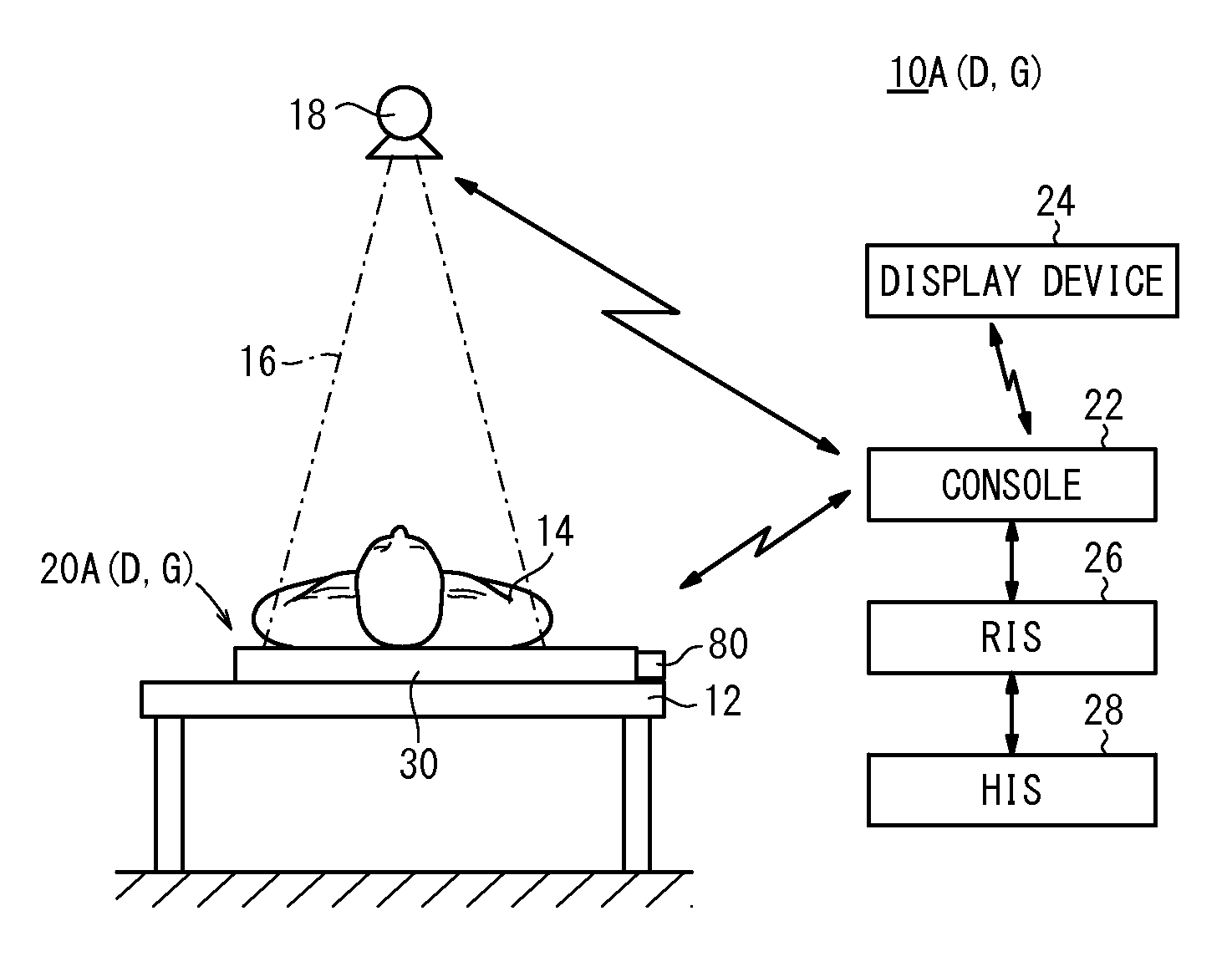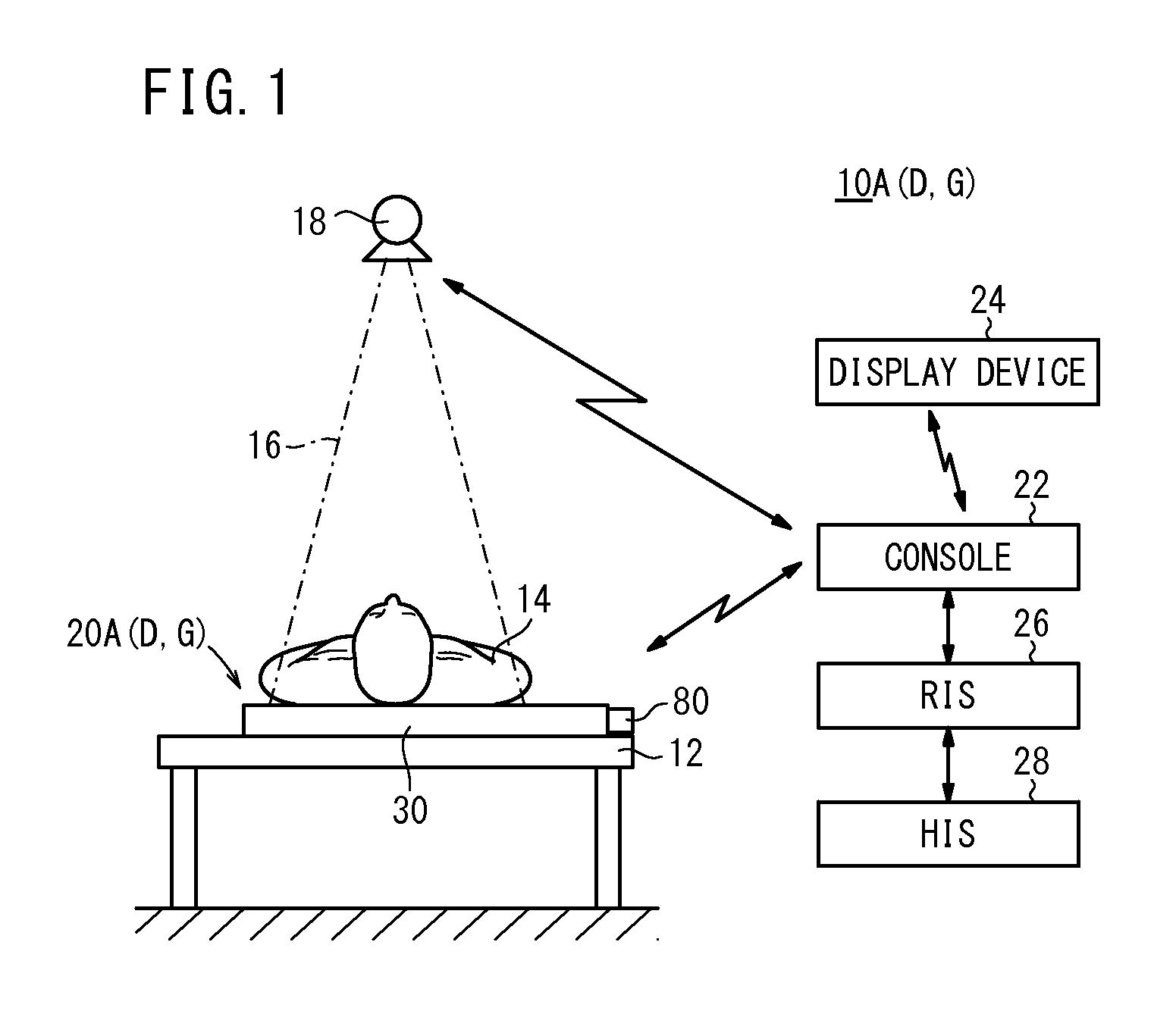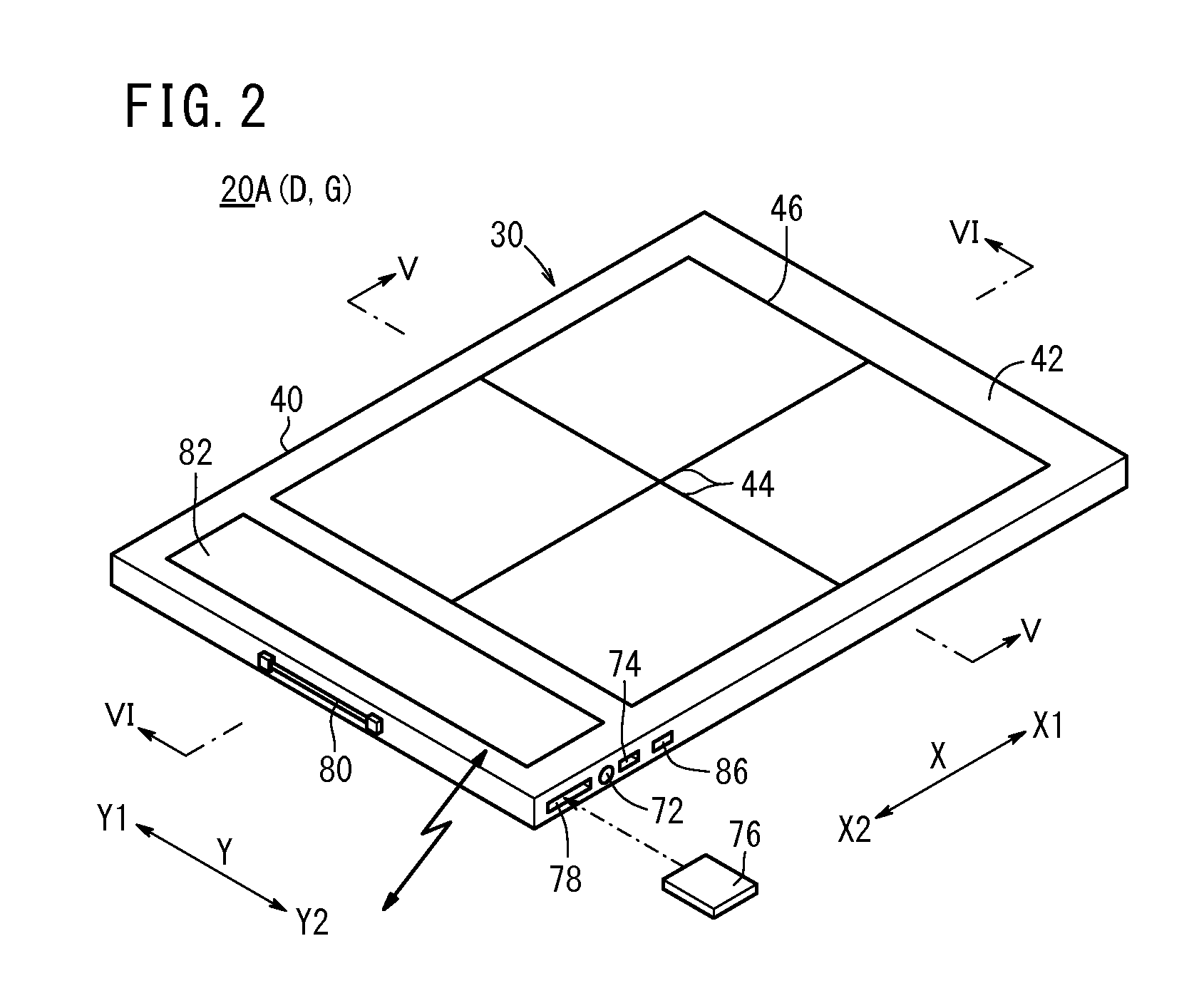Radiation imaging device, radiation imaging system, and method for affixing radiation conversion panel in radiation imaging device
a radiation imaging and radiation imaging technology, applied in the field of radiation imaging devices, radiation imaging systems, and methods for affixing radiation conversion panels in radiation imaging devices, can solve the problems of radiation conversion panels being assembly tends to be deformed under environmental conditions, and radiation conversion panels are likely to crack or peel, so as to prevent cracking and peeling, maintain the planarity of radiation conversion panels, and prevent deformation. , the effect of cracking and peeling
- Summary
- Abstract
- Description
- Claims
- Application Information
AI Technical Summary
Benefits of technology
Problems solved by technology
Method used
Image
Examples
sixth modification
Twenty-Sixth Modification
[0544]The radiation conversion panel 92 according to the first through tenth embodiments may be modified according to a twenty-sixth modification, as shown in FIGS. 92A and 92B. Specific structural details according to the twenty-sixth modification of the radiation conversion panel 92, which incorporates the scintillator of CsI according to the first through tenth embodiments, will be described below.
[0545]According to the twenty-sixth modification shown in FIGS. 92A and 92B, the radiation conversion panel 92 includes a scintillator 500 for converting radiation 16 that has passed through the subject 14 into visible light, i.e., absorbing radiation 16 and emitting visible light, and a radiation detector 502 for converting the visible light from the scintillator 500 into electric signals, i.e., electric charges, representative of a radiographic image. The scintillator 500 corresponds to the scintillators 206, 206a, 206b described above, and the radiation detec...
PUM
 Login to View More
Login to View More Abstract
Description
Claims
Application Information
 Login to View More
Login to View More - R&D
- Intellectual Property
- Life Sciences
- Materials
- Tech Scout
- Unparalleled Data Quality
- Higher Quality Content
- 60% Fewer Hallucinations
Browse by: Latest US Patents, China's latest patents, Technical Efficacy Thesaurus, Application Domain, Technology Topic, Popular Technical Reports.
© 2025 PatSnap. All rights reserved.Legal|Privacy policy|Modern Slavery Act Transparency Statement|Sitemap|About US| Contact US: help@patsnap.com



